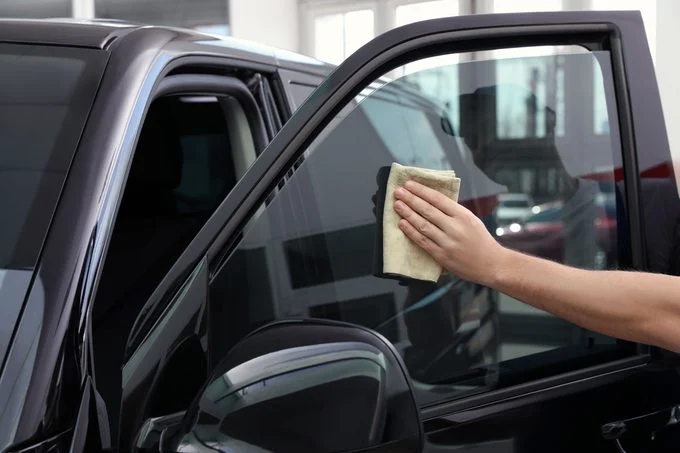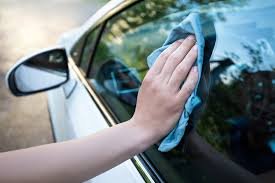Driving at night presents its own unique set of challenges. From reduced visibility to the blinding glare of oncoming headlights, night driving can be both stressful and dangerous—especially for those with sensitive vision. Fortunately, window tinting offers a powerful, often overlooked solution. While most people associate tinting with heat and UV protection, it also plays a critical role in reducing glare and enhancing visibility—even after the sun goes down.
In this article, we’ll explore how professional window tint can reduce nighttime glare, improve driver safety, and create a more comfortable and confident driving experience in low-light conditions. Whether you’re commuting on city roads or navigating rural highways, understanding the science and benefits of night-friendly tint can help you make a safer choice behind the wheel.
Why Glare Is Dangerous at Night: The Hidden Threat to Driver Safety
Glare is a form of intense, uncontrolled light that interferes with visibility. At night, glare is commonly caused by oncoming headlights, reflective road signs, traffic lights, and street lamps. For many drivers, especially those with light sensitivity or aging eyes, glare can result in eye strain, delayed reaction times, and an increased risk of collisions.
Studies have shown that glare reduces visual acuity and increases the time it takes for the eyes to adapt to changing light levels. When you’re temporarily blinded by bright headlights or overhead lighting, you may lose your ability to perceive depth, judge distances accurately, or detect obstacles on the road.
How Window Tint Reduces Glare During Night Driving
High-quality window tint can reduce glare by filtering out specific wavelengths of light—particularly the blue and white spectrum, which tends to scatter and create halo effects around light sources at night. Some tints use advanced optical filtering and polarization to selectively block harsh rays while preserving natural visibility.
Contrary to popular belief, not all tints reduce visibility at night. In fact, certain types of light ceramic or crystalline tint films are specifically engineered to reduce glare without darkening the windows too much. These films can maintain high visible light transmission (VLT)—often between 70% and 85%—while significantly cutting down on light scatter and headlight glare.
When applied correctly to side windows, rear glass, and even windshields (where permitted by law), these tints act like a visual buffer. They soften harsh reflections from headlights and streetlights, allowing drivers to maintain clearer focus and react more quickly to road conditions.
Choosing the Right Tint Shade for Night Driving Safety
One of the biggest misconceptions about tinting is that darker is always better—but that’s not true when it comes to night driving. While dark tints (like 5% or 20% VLT) may work well during the day, they can reduce visibility at night, particularly in poorly lit areas.
For optimal night driving performance, light to medium tints—between 50% and 70% VLT—are often recommended. These shades strike a balance between glare reduction and visibility, offering protection from headlight glare without making it harder to see at night.
Ceramic tints are the best-performing option for night-friendly visibility because they offer superior optical clarity, block infrared heat, and reduce glare without reducing light transmission as much as metallic or dyed films.
Improving Eye Comfort and Reducing Fatigue Behind the Wheel
Driving at night often requires intense concentration, which can quickly lead to eye fatigue, especially in high-glare environments. When your eyes constantly struggle to adjust between bright headlights and dark surroundings, it causes strain and discomfort.
Window tint helps by creating a more even lighting environment inside the vehicle. By reducing the contrast between the dark cabin and sudden bursts of bright light, tint helps your eyes adapt more naturally. This leads to less squinting, fewer headaches, and a smoother visual experience—especially during long night drives or in areas with heavy traffic.
For professional drivers, rideshare operators, and delivery personnel who spend hours on the road after sunset, this benefit can lead to improved concentration, better mood, and fewer accidents due to fatigue.
Legal Considerations for Tint and Night Driving Visibility
While window tint offers significant benefits for night driving, it’s essential to comply with state laws and VLT regulations. In California, for instance, front side windows must allow at least 70% of light to pass through. Windshield tint is typically restricted to the top 4 inches (the visor strip), although some clear ceramic films may be legal if they meet light transmission requirements.
Using a tint that is too dark can impair your ability to see pedestrians, animals, or cyclists at night, and may also result in citations or inspection failures. That’s why it’s crucial to work with a professional window tinting service that understands both optical performance and legal compliance.
A reputable installer can recommend night-safe films, such as 70% ceramic tint, that offer all the benefits of glare reduction, UV protection, and heat rejection—without compromising nighttime visibility.
Real-World Applications: Who Benefits Most from Night-Friendly Window Tint?
While every driver can benefit from reduced glare, certain groups stand to gain the most from night-friendly tinting:
- Elderly drivers who often experience age-related vision changes and increased glare sensitivity.
- Rideshare and taxi drivers who work after dark and need to stay focused for long hours.
- Commercial truckers and delivery drivers navigating poorly lit roads at night.
- Parents and commuters traveling in early morning or late-night hours with increased exposure to headlight glare.
Whether you’re driving a sedan, SUV, truck, or commercial van, investing in night-safe tint not only improves your comfort but also enhances your safety and confidence on the road.
Why Professional Installation Matters for Night Visibility
Proper installation is critical to maximizing the benefits of window tint for night driving. DIY tint jobs often lead to bubbles, uneven application, or poor film selection—all of which can reduce visibility and cause more harm than good.
Professional installers use precision-cut film and apply it with expert technique to ensure flawless results. More importantly, they guide you in choosing the best film technology and shade for your vehicle and driving needs—especially when safety at night is your top priority.
Reputable shops also offer warranties and legal compliance assurance, giving you peace of mind that your investment is both high-performing and street-legal.
Conclusion: Drive Safer After Dark with the Right Window Tint
While often associated with daytime benefits like heat and UV reduction, window tint plays a crucial role in improving night driving safety. By reducing glare from headlights and streetlights, preserving visibility, and decreasing eye fatigue, the right tint can transform your after-dark driving experience.
If you’re looking for a smart, effective way to enhance your comfort and visibility at night, consider having a professional, night-safe window tint installed on your vehicle. With the right film and expert installation, you’ll enjoy safer, clearer driving—no matter what the road or sky throws your way.






